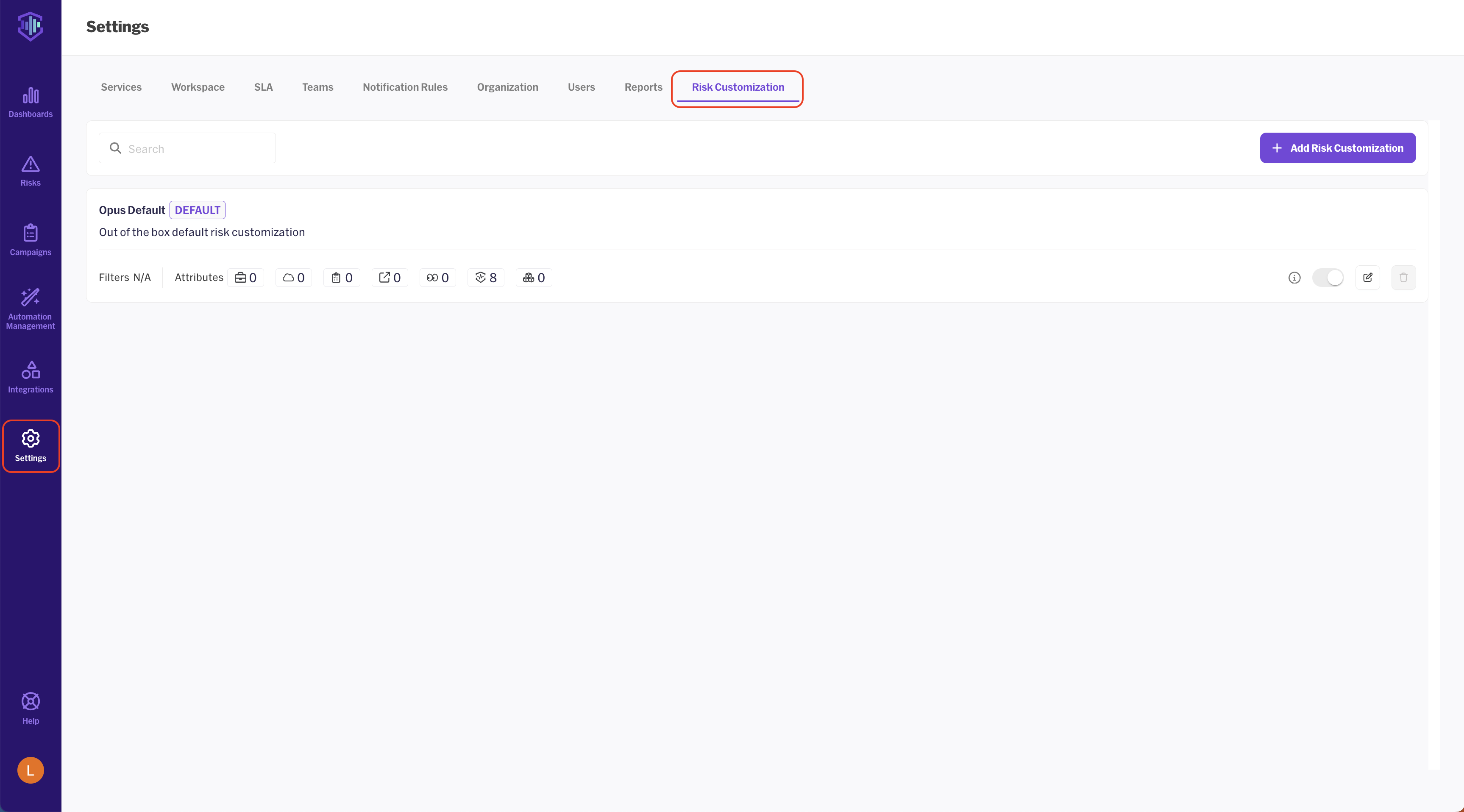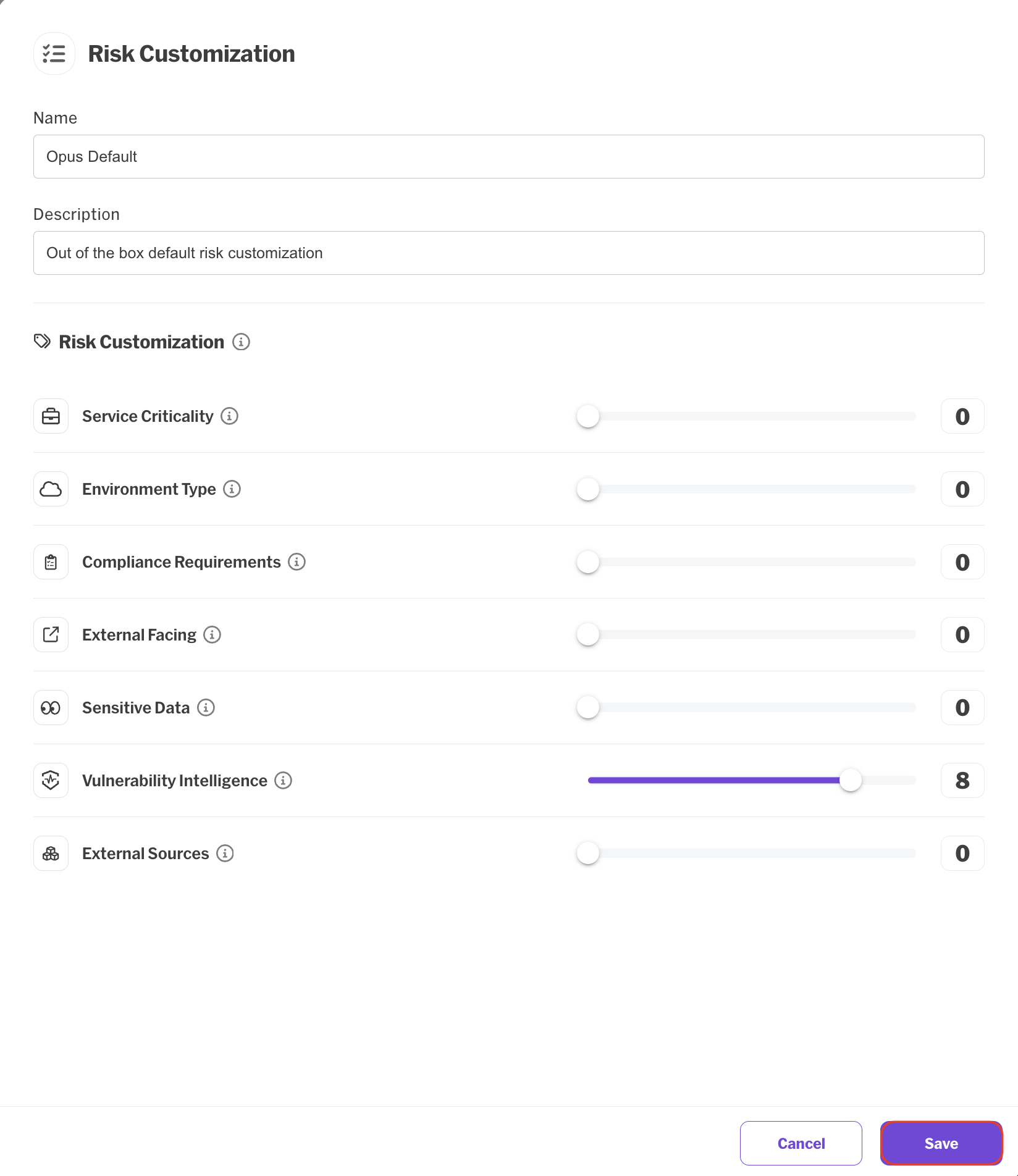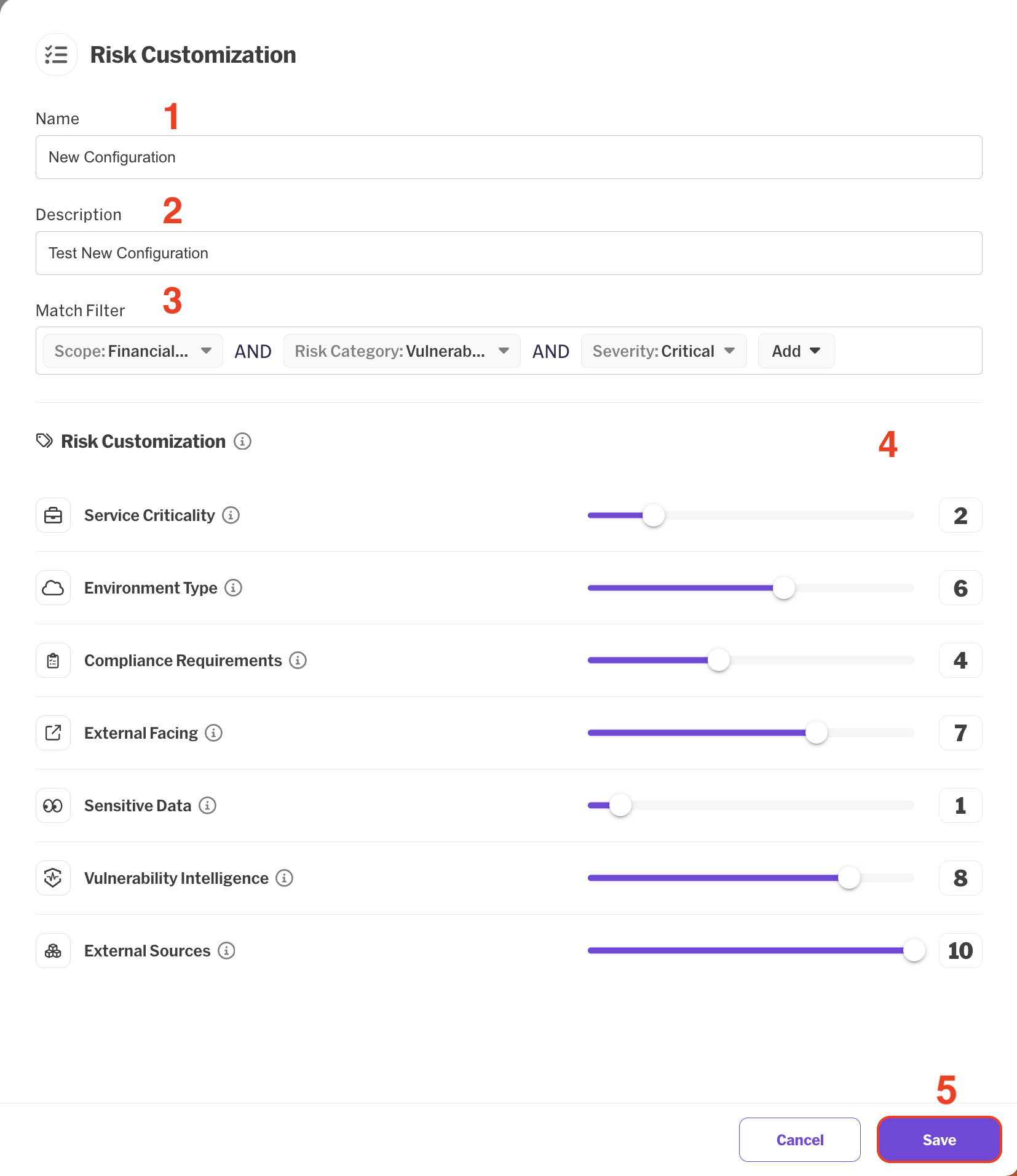Dynamic Risk Customization
Dynamic Risk Customization allows you to define distinct risk score calculations for various variables across your organization. You can assign different weight factors to specific services, groups, scopes, or even particular vulnerability types (or a combination thereof). This approach enables you to achieve more accurate risk prioritization, ensuring that the most critical issues are addressed first.
-
To create a new Risk Customization configuration, navigate to Settings and select Risk Customization.

-
Default Configuration: A default configuration is provided automatically. While this configuration cannot be deleted or disabled, you can modify it by clicking the edit button. You can change its name, description, and weight factors. Note that this default configuration will be applied organization-wide in the absence of any other custom configurations. After making changes, click Save to apply them.


-
Adding a new Configuration: To add a new Risk Customization configuration, click on the + Add Risk Customization located at the top right of the screen. This will open a new configuration layout:

-
Name: Enter a name for the configuration (required).
-
Description: Provide a description for the configuration (optional).
-
Risk Customization: When you create a new configuration, it will initially inherit values from the current default configuration. Adjust the weight factors as needed, keeping in mind how different risk criteria impact the risk score calculation:
- Service Criticality - change is always by
[FACTOR] * 0.1- HBI: Increase
- MBI: Doesn't change
- LBI: Decrease
- Environment Type - change is always by
[FACTOR] * 0.1- PROD: Increase
- CODE/STAGING/MIXED: Doesn't change
- DEV/TESTING: Decrease
- Compliance Requirements - change is always by
[FACTOR] * 0.1- If any compliance requirement is selected for the service: Increase only
- External Facing - change is always by
[FACTOR] * 0.1- If the service is "Internet Facing" or "Customer Facing": Increase
- If resource attributes include "External Facing": Increase
- Sensitive Data - change is always by
[FACTOR] * 0.1- If the service contains "Crown Jewels," "PII," "PCI," or "PHI": Increase
- If resource attributes include "Sensitive Data": Increase
- Vulnerability Intelligence - change is by
([Severity Score] - [Intelligence Rating])*[FACTOR]- If the intelligence rating is higher than the severity score: Increase
- If the intelligence rating is lower than the severity score: Decrease
- External Sources - change is by
[FACTOR]*0.1*[WORKFLOW_SCORE]- If an external source step is defined in a workflow: Increase/Decrease (as workflow scores can be positive or negative)
- Service Criticality - change is always by
-
Save: Once the configuration details are set, click Save at the bottom left of the editing window to save your new configuration.

-
-
New configurations can be toggled on/off, edited, or deleted as needed.

Important Notes
- Order of Application: Risk customization configurations are applied in the order they are created, with the newest configuration taking precedence. If two configurations apply to the same service, the most recently created one will override the older one.
- Inheritance of Default Values: Modifying the default configuration will not affect the weight factors in other configurations that were initially based on the original default settings.
Updated 5 days ago
